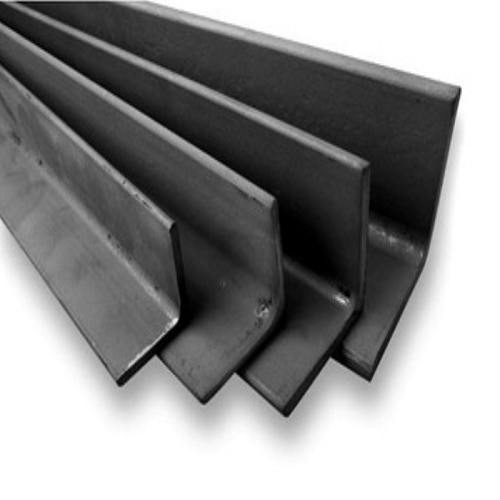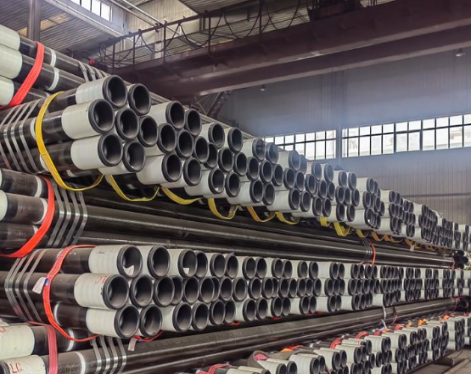Angle steel iron is a commonly used building material used to support and connect structural members and has excellent strength and corrosion resistance. A36 steel angle bars means that the material meets the requirements of the American ASTM A36 standard.
The ultimate tensile strength of A36 steel is 58,000psi to 79,800psi. The exact ultimate tensile strength depends on a variety of factors, such as chemical composition and forming method. A36 is relatively malleable and can stretch to about 20% of its original length when tested in tension. Its ductility and strength also give it excellent impact strength at room temperature.
A36 is manufactured similarly to most carbon steels. First, iron ore and coal are mixed in a furnace. Impurities are removed and alloying elements are added to the molten steel, which eventually solidifies into a rectangular ingot. A36 steel is generally hot rolled, which means that while the ingot is at high temperatures, rollers are used to shape it into its final size.
A36 steel is popular due to its relatively low cost. A36 can be found in many different industries and in a variety of applications. Also, as mentioned above, its mechanical properties make it particularly suitable for structural applications such as bridges and buildings, but it is also suitable for components in the automotive, construction, heavy equipment, and oil and gas industries.
A36 is an angle steel material grade in the American ASTM. Its chemical composition requirements and mechanical properties comply with ASTM A36/A36M standards. This standard requires A36 angle steel material to have excellent weldability
Connectivity, workability and good strength and toughness. Therefore, A36 angle steel is widely used in construction, bridges, machinery manufacturing and other fields.
Compared with other steel materials, A36 steel angle iron has unique advantages. A36 angle steel has excellent corrosion resistance and can be used for a long time in harsh environments without rust and corrosion. A36 angle steel has high strength and good toughness, and can withstand large loads, ensuring the stability and safety of the building. In addition, the processing performance of A36 steel angle bars allows for processing operations such as cutting, welding and cold bending, with high flexibility, providing convenient and flexible solutions for your projects.
The detailed characteristics of A36 steel angle are shown in the table below
1.What is the ASTM for angle bar?
The ASTM standard for angle steel refers to a series of standards established by the American Society for Testing and Materials (ASTM) for the production and use of angle steel.The ASTM for angle steel is ASTM A36/A36M.This specification covers carbon structural steel shapes, plates, and bars of structural quality for use in riveted, bolted, or welded construction of bridges and buildings, and for general structural purposes.
2.What is ASTM A36 steel grade?
(1)Chemical composition of A36 steel grade
A36 is a low carbon steel with a carbon content of less than 0.3%. This makes A36 steel easy to process, weld, and form, making it ideal for use as general purpose steel. Low carbon also prevents heat treatment from affecting A36 steel. A36 steel also contains small amounts of other alloying elements, such as manganese, sulfur, phosphorus, and silicon. Adding these alloying elements can make A36 steel have the required chemical and mechanical properties. Since A36 contains too little nickel and chromium, its corrosion resistance is not very good.
(2) Mechanical properties of A36 steel
The ultimate tensile strength of A36 steel is 58,000psi to 79,800psi. The exact ultimate tensile strength depends on a variety of factors, such as chemical composition and forming method. A36 is relatively malleable and can stretch to about 20% of its original length when tested in tension. Its ductility and strength also give it excellent impact strength at room temperature.
(3) How A36 steel is manufactured?
A36 is manufactured similarly to most carbon steels. First, iron ore and coal are mixed in a furnace. Impurities are removed and alloying elements are added to the molten steel, which eventually solidifies into a rectangular ingot. A36 steel is generally hot rolled, which means that while the ingot is at high temperatures, rollers are used to shape it into its final size.
(4) Common uses of A36
A36 steel is popular due to its relatively low cost. A36 can be found in many different industries and in a variety of applications. Also, as mentioned above, its mechanical properties make it particularly suitable for structural applications such as bridges and buildings, but it is also suitable for components in the automotive, construction, heavy equipment, and oil and gas industries.

3.What are the properties of A36 angles?
A36 is an angle steel material grade in the American ASTM. Its chemical composition requirements and mechanical properties comply with ASTM A36/A36M standards. This standard requires A36 angle steel material to have excellent weldabilityConnectivity, workability and good strength and toughness. Therefore, A36 angle steel is widely used in construction, bridges, machinery manufacturing and other fields.
Compared with other steel materials, A36 steel angle iron has unique advantages. A36 angle steel has excellent corrosion resistance and can be used for a long time in harsh environments without rust and corrosion. A36 angle steel has high strength and good toughness, and can withstand large loads, ensuring the stability and safety of the building. In addition, the processing performance of A36 steel angle bars allows for processing operations such as cutting, welding and cold bending, with high flexibility, providing convenient and flexible solutions for your projects.
The detailed characteristics of A36 steel angle are shown in the table below
| Section | Attribute | Description or Value |
|---|---|---|
| General |
Grade | ASTM A36 Steel, Hot Rolled |
| Finish | Mill (unpolished, slightly grainy) | |
| Characteristics | Welding | Excellent |
| Machining / Grinding | Good | |
| Bending / Forming | Fair | |
| Wear Resistance | Fair | |
| Corrosion Resistance | Poor | |
| Mechanical Properties | Yield Point | 36,000 psi |
| Tensile Strength | 58,000 psi | |
| Elongation | 20% in 2" | |
| Brinell Hardness | 133 | |
| Melting Point | 2600°F | |
| Chemical Composition | Manganese | 1.03% |
| Silicon | 0.28% | |
| Carbon | 0.25-0.29% | |
| Copper | 0.20% | |
| Sulfur | 0.50% | |
| Phosphorous | 0.40% | |
| Iron | Balance (remainder of composition) | |
| Common Uses | Application | Shelving, Structural supports, Farm equipment, Construction equipment, Booms, Rails, Braces, Frames, Brackets, Cross-members, Liners, Truck trailers, Truck beds, Racks |









